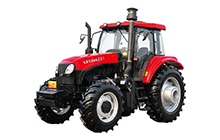Passenger
vehicles

Vehicle use
First, let’s start with their main uses. Buses are usually used for short-distance transportation in cities or urban areas. They play a key role in transportation between cities and in public transportation within cities. These vehicles are typically designed to operate on busy city streets to allow passengers to move easily within the city.
In contrast, long-distance buses are more suitable for traveling across longer distances. They are often used for travel between countries and continents, or for long-distance bus journeys. The design and performance of long-distance buses are more suitable for driving on highways, providing a comfortable long-distance travel experience.

Seats and passenger capacity
Another notable difference is seating and passenger capacity. Buses usually have fewer seats, usually less than 30 seats. This is to adapt to the needs of urban transportation, making it easier for passengers to get in and out of vehicles and navigate congested streets.
In contrast, long-distance buses are usually equipped with more seats, with a passenger capacity of 60 or more. This makes them ideal for large-scale tours or long-distance journeys, where passengers can stretch their legs in comfortable seats and enjoy their time on the road.

Facilities and comfort
Long-distance buses are usually equipped with more facilities to provide a higher level of comfort. These facilities may include luggage compartments, wider seats, more legroom, adjustable seats, independent air-conditioning systems, entertainment equipment and toilets. These facilities make long-distance travel more enjoyable and convenient.
City buses usually provide basic seating and air-conditioning systems to meet the needs of short-distance travel. Their main goal is to transport passengers within cities quickly and efficiently, and therefore have fewer facilities.

Driver training
Driving a coach requires a higher level of driving skills and training. Drivers must handle larger vehicles, deal with various traffic situations on the highway, and ensure the safety of their passengers. Therefore, long-distance bus drivers usually need more professional training.
In contrast, city bus drivers typically require only basic driving training because they operate in urban environments at relatively low speeds and handle relatively simple situations.

In conclusion
In general, there are clear differences between buses and coaches in terms of purpose, passenger capacity, comfort, facilities and driver training. Understanding these differences can help you better meet your needs when choosing transportation. Whether it's a short trip within a city or a long trip across the country, there's an option for you.








